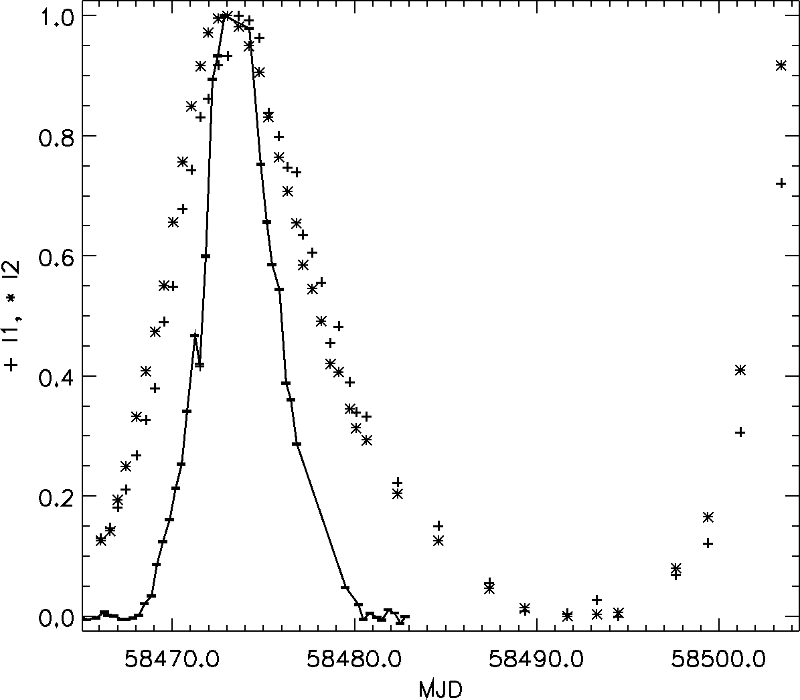| EPoS Contribution |
|
Episodic accretion in high-mass star formation: Masers as canary birds
Hendrik Linz MPIA, Heidelberg, DE | |
| The question how high-mass protostars gain their mass is still debated. Most scenarios include a circumstellar disk as a main ingredient. Recent numerical simulations predict that sufficiently massive disks could form gravitational instabilities, which eventually can enable burst-like accretion events. Some theorists predict that a considerable fraction of the total mass of a future high-mass star is being accumulated in such events. We need to underpin such predictions with observations, but to catch such outburst events is a delicate business. To "see" the outburst directly by its released IR luminosity would be very difficult to achieve, since currently no monitoring of a large sample of sources can be done in the mid- or far-IR with sufficient cadence. However, methanol Class II masers, being pumped by IR radiation, are a very sensitive rapid-alert system. In our contribution, we show examples of our work to characterise variability events in cases of periodic variations as well as in case of bursts, both employing masers as indicators for activity. In the case of the periodic source G107 (P~34.5 d) we could show the simultaneous variation of the maser intensity and the 3-5 micron continuum radiation recorded by Spitzer over a full period (see figure). Furthermore, we will talk about the activities of the Maser Monitoring Organisation (M2O), a consortium of scientists which coordinates the monitoring of masers as well as the follow-up observations in case of peculiar activity. One of our most recent successes involved the outbursting protostar in G358. Our maser follow-up using VLBI revealed a fast morphological expansion of the maser distribution, indicating the propagation of a heat wave through the circumstellar medium (see reference). | |
 | |
| Caption: Light curves for the periodic maser source G107, obtained by our team simultaneously in the infrared and in the methanol maser emission. The x-axis shows the modified Julian date. The plus and asterisk symbols denote the time-resolved photometry of the protostar in the 3.6 and 4.5 micron filters of Spitzer/IRAC, respectively. The black line shows the light curve of the strongest velocity component of the G107 methanol maser. This is probably the first contemporaneous measurement campaign of this kind. | |
| Collaborators: B. Stecklum, TLS, DE H. Beuther, MPIA, DE A. Caratti o Garatti, DIAS, IR M. Szymczak, Copernicus U, PL R.A. Burns, NAOJ, JP |
Key publication
Suggested Session: High-Mass Star Formation |

